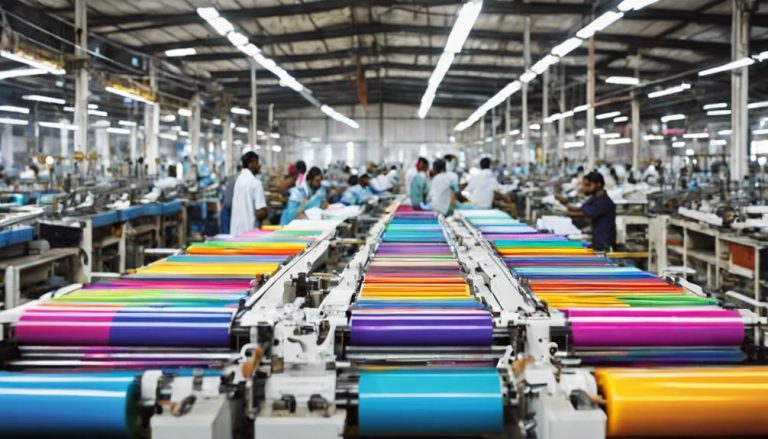Creating Compelling CTAs for Landing Pages
You've spent countless hours perfecting your landing page, but without a compelling call-to-action (CTA), it's likely falling flat. A well-crafted CTA can be the difference between a visitor taking action and abandoning your page. But what makes a CTA truly effective? Is it the language, the design, or something else entirely? By understanding the psychology behind CTAs and implementing a few key strategies, you can substantially boost conversions and drive real results. But first, you need to know what mistakes to avoid and what tactics to employ – and that's exactly where we're about to start.
Key Takeaways
- Use action-oriented language with verbs like 'Get' and 'Discover' to drive conversions and increase click-through rates.
- Create a sense of urgency and scarcity with limited-time offers, countdown timers, and phrases like 'Limited time only' to boost conversions.
- Design clear and direct CTAs with simple language, actionable verbs, and contrasting colors to increase conversions by up to 25%.
- Place CTAs above the fold, use a clear visual hierarchy, and apply corner placement to guide users' attention and drive conversions.
Understanding Your Target Audience
To craft compelling CTAs that drive conversions, you need to start by understanding who your target audience is, what motivates them, and what actions they're likely to take.
This requires creating detailed target personas that capture their demographics, goals, challenges, and behaviors.
By doing so, you'll gain a deeper understanding of what drives your audience's decision-making process.
When creating your target personas, consider their buyer behaviors.
What're their pain points, and how do they currently address them?
What're their motivations for seeking a solution, and what're their expectations from a product or service like yours?
Analyze data from your website, social media, and customer interactions to identify patterns and trends that can inform your personas.
Crafting Compelling CTA Copy
You're ready to craft CTAs that drive real results.
To do this, you'll need to focus on making your copy action-oriented, using words that prompt visitors to take a specific step.
Make It Action-Oriented
Crafting compelling CTA copy starts with using action-oriented language that drives conversions, with studies showing that verbs like 'Get' and 'Discover' can increase click-through rates by up to 25%.
You want to use action phrases that prompt visitors to take immediate action. Phrases like 'Sign Up Now' or 'Join Today' create a sense of urgency and encourage visitors to complete the desired action.
When writing your CTA copy, use an imperative tone that directs visitors to take a specific action.
Use verbs like 'Get Instant Access' or 'Start Your Free Trial' to create a sense of excitement and anticipation.
Avoid using passive voice or vague language that may confuse visitors.
Use Urgency and Scarcity
By incorporating urgency and scarcity into your CTA copy, you can boost conversions by up to 15% and create a sense of FOMO (fear of missing out) that drives visitors to take immediate action.
This tactic is particularly effective when used in conjunction with limited-time offers or flash sales. By creating a sense of urgency, you can prompt visitors to make a decision quickly, rather than putting it off until later.
To use urgency and scarcity effectively, try using phrases like 'Limited time only' or 'Flash sale ends soon' in your CTA copy.
You can also use countdown timers or scarcity messaging to create a sense of FOMO. For example, 'Only 24 hours left to take advantage of our limited-time offer' or 'Only a few spots remaining – sign up now!'
By creating a sense of urgency, you can encourage visitors to take action quickly and increase conversions. Remember to use this tactic sparingly, as overusing it can come across as insincere or manipulative.
Use it strategically to maximize its impact and drive results.
Be Clear and Direct
When it comes to crafting compelling CTA copy, clarity and directness are key, as they enable you to cut through the noise and drive visitors to take action, with studies showing that clear and direct CTAs can increase conversions by up to 25%. You want your visitors to know exactly what action to take and what to expect next. Using clear language and direct instructions helps eliminate any confusion or uncertainty.
To achieve clarity and directness in your CTA copy, follow these best practices:
- Use simple and concise language: Avoid using jargon or overly technical terms that might confuse your visitors.
- Be specific: Clearly state what action you want visitors to take, whether it's to sign up, download, or purchase.
- Use actionable verbs: Verbs like 'Get Started,' 'Sign Up,' and 'Learn More' encourage visitors to take action.
- Remove ambiguity: Guarantee your CTA copy leaves no room for interpretation, so visitors know exactly what to do next.
Choosing Effective CTA Colors
Choosing Effective CTA Colors
Selecting the right colors for your CTAs can substantially boost conversions, and it's not just about personal preference; Color Psychology plays a significant role in influencing user behavior.
You need to understand the emotional connections people make with different colors and leverage that knowledge to drive conversions. For instance, orange is known to create a sense of urgency, while green conveys trust and stability.
To maximize impact, your CTA colors should also align with your brand's overall aesthetic, maintaining Brand Consistency across all touchpoints.
This consistency reinforces your brand's identity and makes your CTAs more recognizable. Don't be afraid to experiment and test different color combinations to find the perfect fit for your brand.
Data-driven decision making is key; analyze the performance of your CTAs and adjust your color scheme accordingly.
Optimizing CTA Button Design
To optimize your CTA button design, you'll want to focus on creating a clear visual hierarchy that draws users' attention and encourages them to take action. This is vital in guiding users towards completing the desired action.
When it comes to CTA button design, several key elements can make or break its effectiveness.
Contrasting colors: Use a color that stands out from the rest of your landing page, but still aligns with your brand identity.
Button Shapes: Use simple, rounded shapes like rectangles or rounded rectangles. Avoid complicated shapes that may confuse users.
Font Styles: Choose a clear, easy-to-read font style that's consistent with your brand. Avoid fonts that are too ornate or difficult to read.
Size and Proximity: Verify your CTA button is large enough to click on mobile devices, but not so large that it overwhelms the rest of the page.
Placement Strategies for CTAs
Now that you've optimized your CTA button design, it's time to focus on placement strategies that drive conversions.
You'll want to position your CTAs in areas where they can't be missed, such as above the fold or in a prominent corner of your webpage.
Above the Fold
By placing your call-to-action (CTA) above the fold, you're more likely to grab users' attention and drive conversions, as this prime real estate is visible without requiring visitors to scroll. This strategic placement is vital, as it secures your CTA is one of the first things users see when they land on your page.
Increased visibility: By placing your CTA above the fold, you're guaranteeing that users will see it, even if they don't scroll down the page.
Improved click-through rates: Studies have shown that CTAs placed above the fold tend to have higher click-through rates compared to those placed below the fold.
Enhanced user experience: By making your CTA easily accessible, you're providing a seamless user experience that encourages visitors to take action.
Better conversion rates: By placing your CTA in a prominent position, you're more likely to drive conversions and achieve your desired outcome.
Visual Hierarchy Matters
You can boost the effectiveness of your CTAs by creating a clear visual hierarchy that guides users' attention to the most important elements on your page. A well-designed visual hierarchy helps users quickly understand the purpose of your page and what action to take next.
To create a clear visual hierarchy, apply hierarchy principles such as size, color, and contrast to draw attention to your CTA.
Use a larger font size and a bold color to make your CTA stand out from the rest of the content. This will help create a clear visual flow that directs users' attention to the CTA.
Additionally, use white space effectively to create a clear distinction between different elements on the page. By doing so, you'll create a clear visual hierarchy that guides users' attention to the CTA.
According to studies, a clear visual hierarchy can increase conversion rates by up to 25%. By applying these principles, you can create a visual flow that drives users to take action and boosts the effectiveness of your CTAs.
Prominent Corner Placement
Having optimized your CTAs with a clear visual hierarchy, it's time to strategically place them in a location that maximizes visibility and click-through rates, such as the prominent corner of your page. This is where corner dominance comes into play. By placing your CTA in a corner, you're creating an eye-catching placement that draws the user's attention.
Reduced distractions are one reason why prominent corner placement works. By placing your CTA in a corner, you're moving it away from other page elements that might compete for attention.
Increased visibility is another reason. Corners are natural focal points, making it more likely that users will notice your CTA.
Improved click-through rates have been shown in studies. CTAs placed in corners tend to perform better than those placed in other areas of the page.
Enhanced user experience is also a benefit. By making your CTA easy to find, you're creating a more intuitive and user-friendly experience.
Creating Sense of Urgency
To drive conversions, crafting a sense of urgency around your offer is crucial, as it prompts visitors to take action sooner rather than later.
You can create a sense of urgency by using limited-time offers, scarcity, or exclusive deals. This tactic works because it taps into your visitors' fear of missing out (FOMO). When you limit the time to take action, you're creating a psychological response that motivates visitors to act quickly.
Use countdown timers to add an extra layer of urgency to your CTAs. This visual cue creates a sense of scarcity, making visitors more likely to take action.
For example, you can use a countdown timer to promote a limited-time offer, such as 'Limited spots available – sign up within the next 24 hours!' or 'Only 2 hours left to redeem your exclusive discount!' By incorporating countdown timers and limited-time offers, you'll create a sense of urgency that drives conversions and boosts your bottom line.
Measuring CTA Performance Metrics
Measuring the performance of your CTAs is crucial in determining their effectiveness and identifying areas for improvement.
Track key metrics such as click-through rates, conversion rates, and return on investment (ROI) to gauge their impact on your bottom line. You'll want to focus on the metrics that matter most to your business goals, whether that's generating leads, driving sales, or boosting engagement.
Click-through rate (CTR): The percentage of users who click on your CTA out of the total number of users who see it.
Conversion rate: The percentage of users who complete the desired action (e.g., fill out a form, make a purchase) after clicking on your CTA.
Return on investment (ROI): The revenue generated by your CTA compared to the cost of creating and promoting it.
Cost per acquisition (CPA): The cost of acquiring one customer or conversion through your CTA.
A/B Testing for CTAs
With your CTA performance metrics in hand, it's time to experiment and optimize with A/B testing, a data-driven approach that lets you pit two versions of your CTA against each other to see which one drives more conversions.
This method allows you to make informed decisions, backed by data, to improve your CTA's performance. By creating two versions of your CTA, you can test different variables such as button color, text, and placement.
When running an A/B test, it's crucial to define a clear hypothesis and identify the key metrics you want to measure.
This will help you determine the test winner and make data-driven decisions. Once the test is complete, analyze the split results to see which version performed better.
Be cautious of minor variations in results, as they may not be statistically significant. Instead, focus on significant differences that indicate a clear winner.
Frequently Asked Questions
What Is the Ideal CTA Length for Mobile Devices?
When designing mobile-friendly interfaces, you're probably wondering what's the ideal CTA length for a finger tap. Research shows that CTAs around 7-10 words work best, as they're easy to tap and understand on smaller screens.
Can CTAS Be Used on Social Media Platforms?
You can leverage Social proof CTAs and Visual hierarchy CTAs on social media platforms to boost engagement. Use eye-catching visuals, customer testimonials, and clear calls-to-action to drive conversions, increasing your online presence and reach.
How Often Should CTAS Be Rotated for Freshness?
You should rotate CTAs every 2-3 months to maintain freshness. Consider a CTA refresh rate that aligns with seasonal promotions, ensuring your messaging stays relevant and engaging. Track performance to optimize your rotation schedule.
Can CTAS Be Used for Non-Commercial Purposes?
You can leverage CTAs for non-commercial purposes, such as charity drives and community engagement. By optimizing CTAs for these initiatives, you'll increase conversions, boost donations, and enhance social impact, as seen in successful crowdfunding campaigns.
What Is the Role of CTAS in Email Marketing?
You're using CTAs in email marketing to drive conversions, so make them count. Create a sense of message urgency by using action-oriented language and scarcity tactics to prompt subscribers to act quickly, boosting email conversions.
Conclusion
Boost conversions and drive results with CTAs that work.
You've learned how to craft compelling copy, choose effective colors, optimize button design, and create a sense of urgency.
Now, test and refine your CTAs with data-driven metrics and A/B testing.
By applying these strategies, you'll increase click-through rates by up to 25% and maximize landing page performance.
Take action and start optimizing your CTAs today to see real results.







